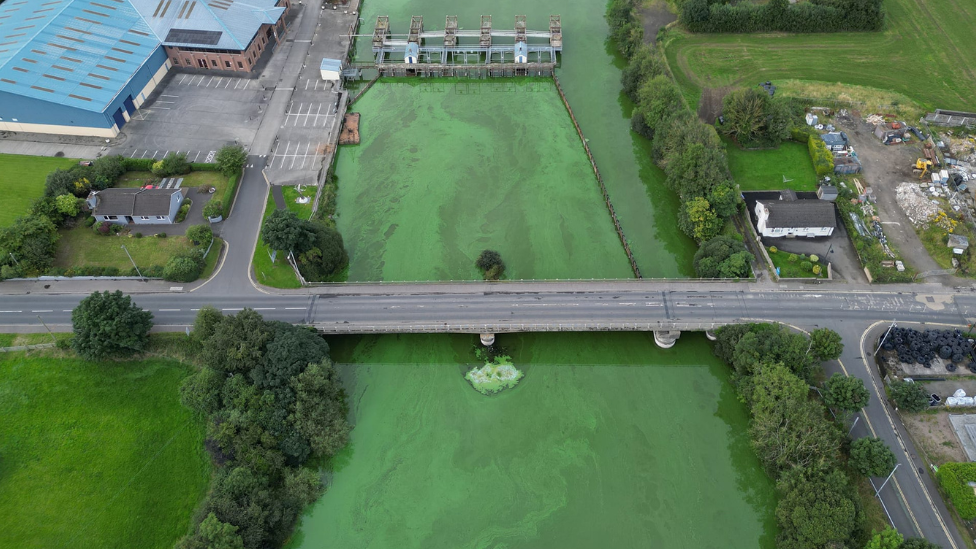Project to tackle blue-green algae in Lough Neagh
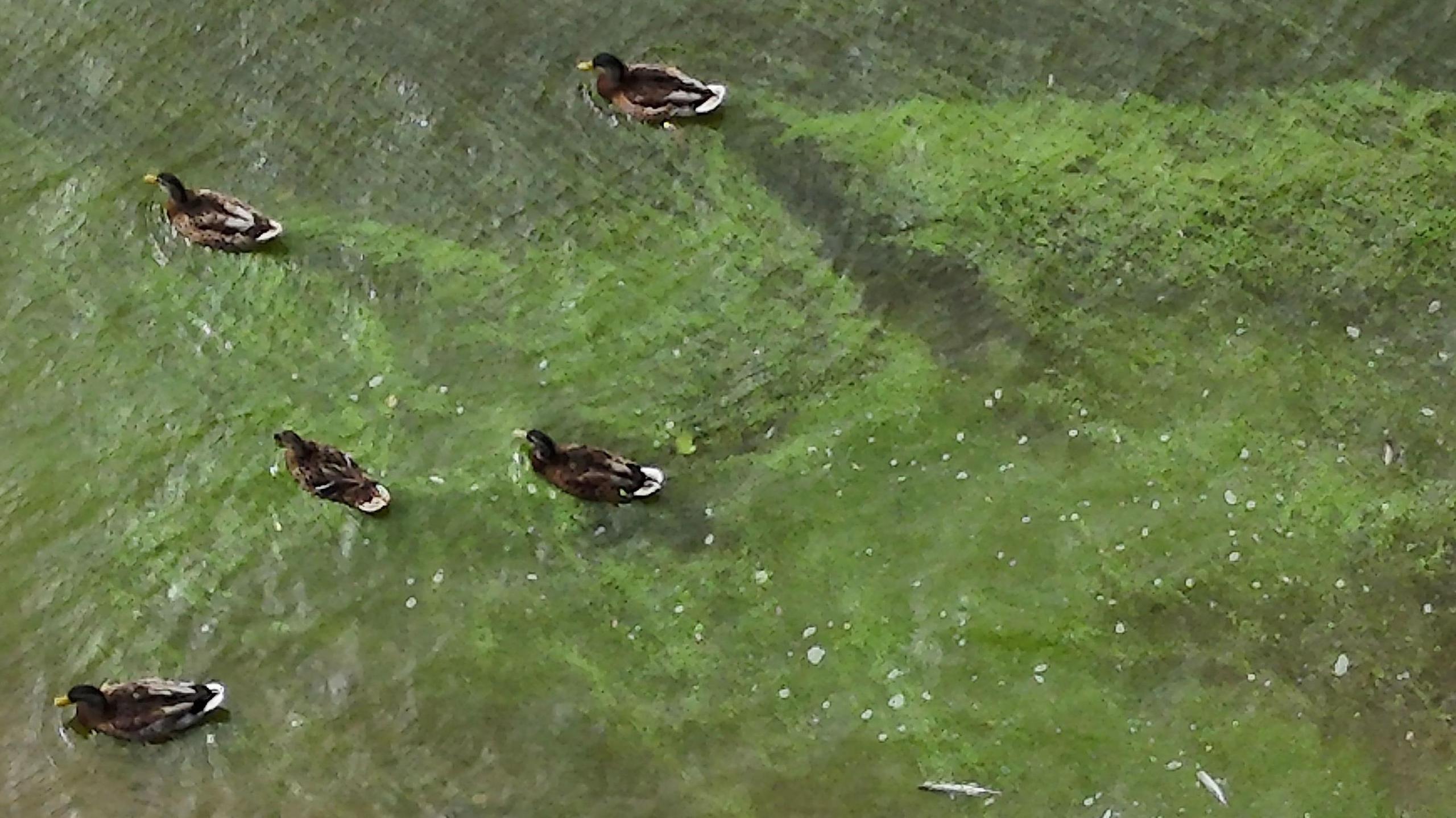
The project's announcement has coincided with a resurgence of blue-green algae in Lough Neagh
- Published
A research project to explore solutions to tackle blue-green algae has been launched by the Department of Agriculture, Environment and Rural Affairs (Daera).
The Lough Neagh: Blue-Green Algae Small Business Research Initiative (SBRI) is one of the 37 actions contained in the Lough Neagh Action Plan approved by the executive in July.
It is being announced at the same time that there has been a resurgence of the bacteria in the lough.
Five applicants will be selected in phase one to develop proof of concepts to treat and reduce blue-green algal blooms without impacting the natural environment of the lough and associated Northern Ireland waterways.
'Provide solutions'
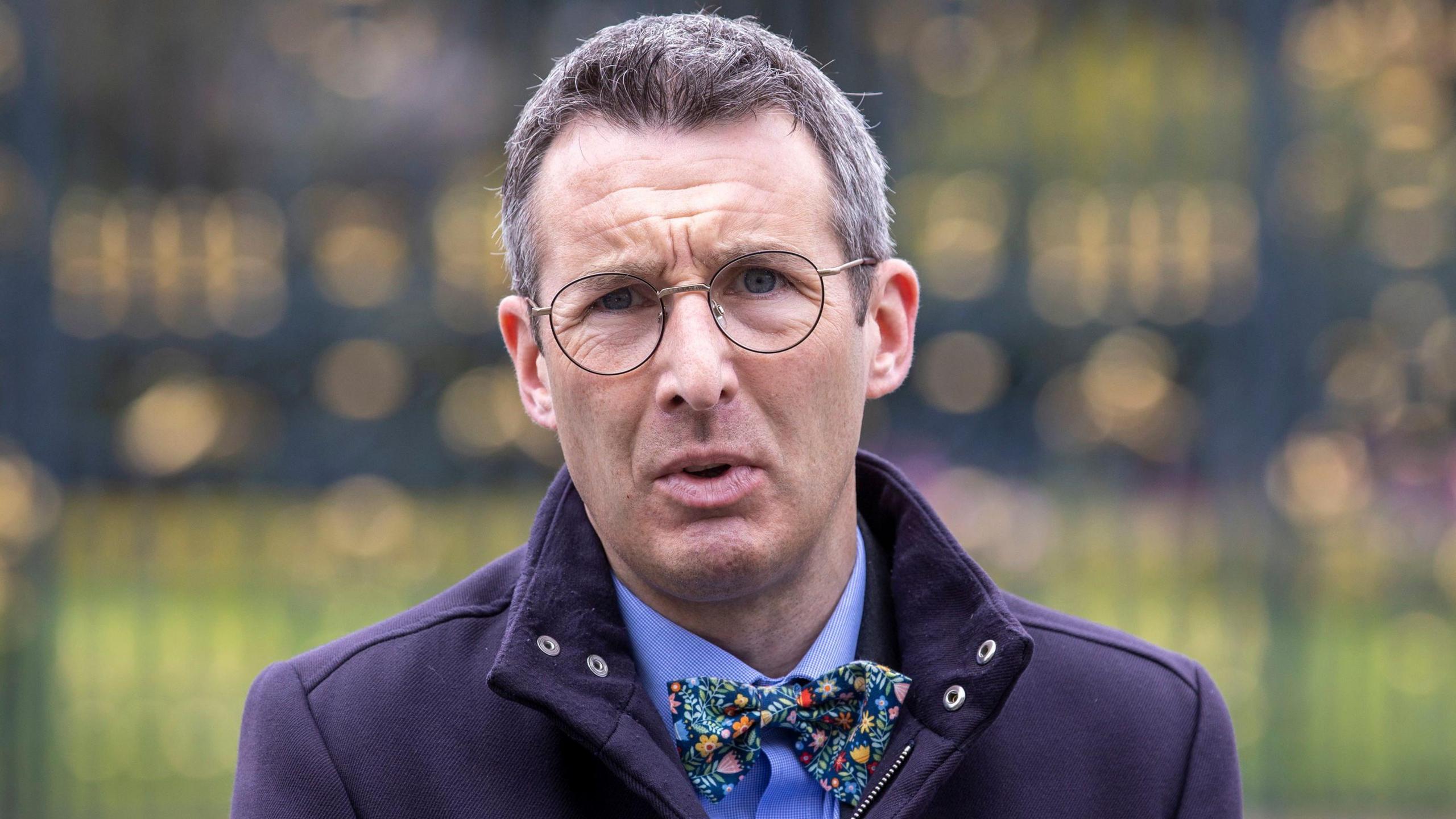
The Daera minister said while it would “not fully address” the blue-green algae problem, it would help improve the lough
In the second phase, two to three of those concepts will be chosen and developed as potential pilot solutions.
The £450,000 initiative includes money from Daera and from the SBRI challenge fund at the Department for the Economy.
Daera Minister Andrew Muir said while it would “not fully address” the blue-green algae problem, it would help improve the lough.
“It will contribute, along with the other actions contained in the Lough Neagh report, to help deliver my vision to have a healthy, resilient environment with high water quality status and environment standards thereby contributing to the health and wellbeing of our citizens," he said.
“Whilst much attention has been devoted to the issues with blue-green algae in Lough Neagh, I am equally focussed on water quality issues across Northern Ireland and this work will hopefully provide solutions that can be applied to any area that has been affected by the emergence of blue-green algae.”
'Policy challenges'
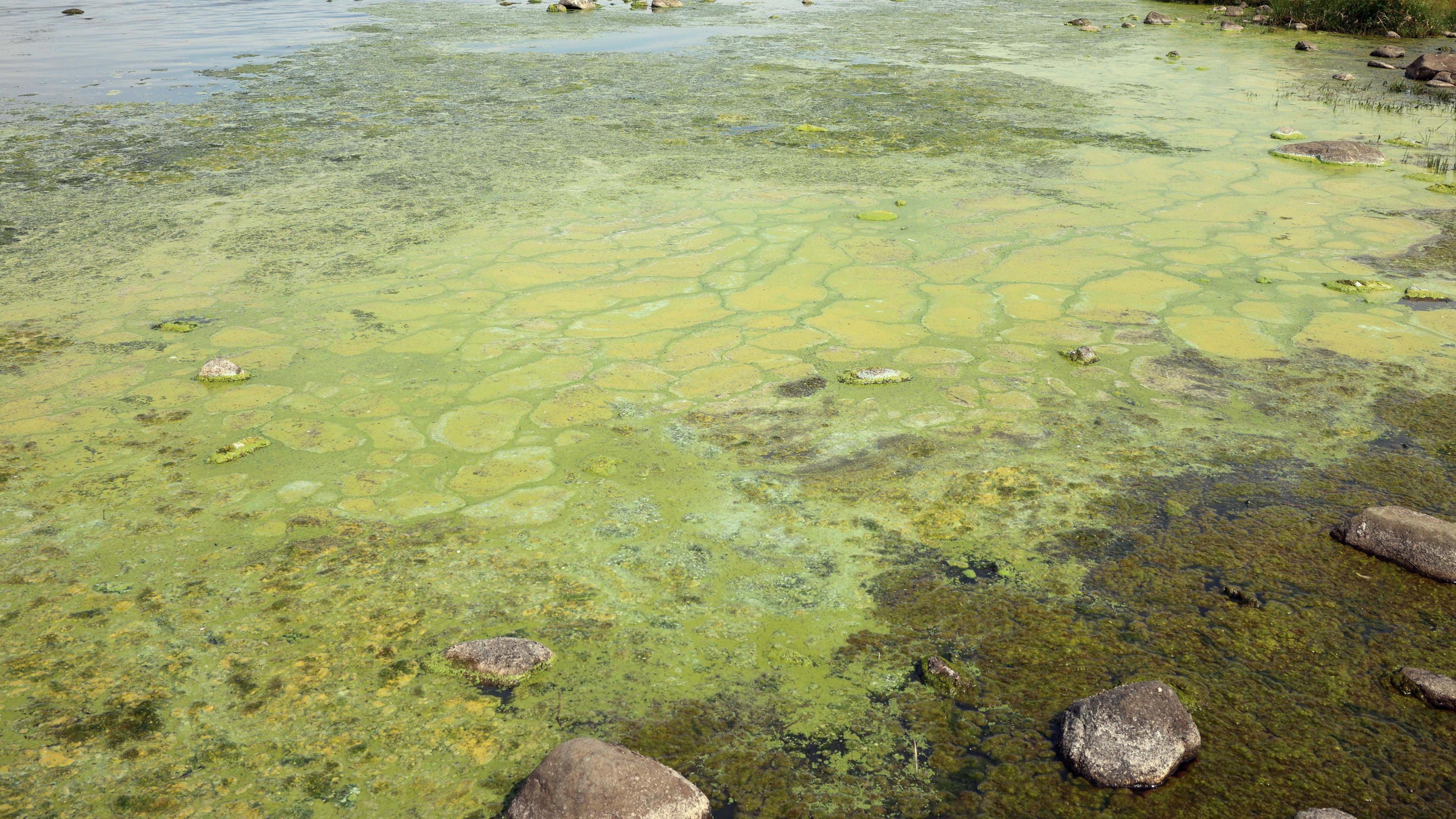
Applications can involve physical, chemical or biological solutions
The six-week window for phase one, external is now open.
Applications can involve physical, chemical or biological solutions but must not contribute to further environmental degradation and must comply with legislation and environmental designations.
This first phase will continue until March 2025, with phase two potentially commencing in summer 2025.
Economy Minister Conor Murphy said his department’s SBRI challenge fund supported the development of “innovative solutions to complex public policy challenges”.
Adding that Lough Neagh was a “vital asset”, he said it was welcome that the fund will be used to formulate a solution to the blue-green algae problem.
What is blue-green algae and is it harmful?
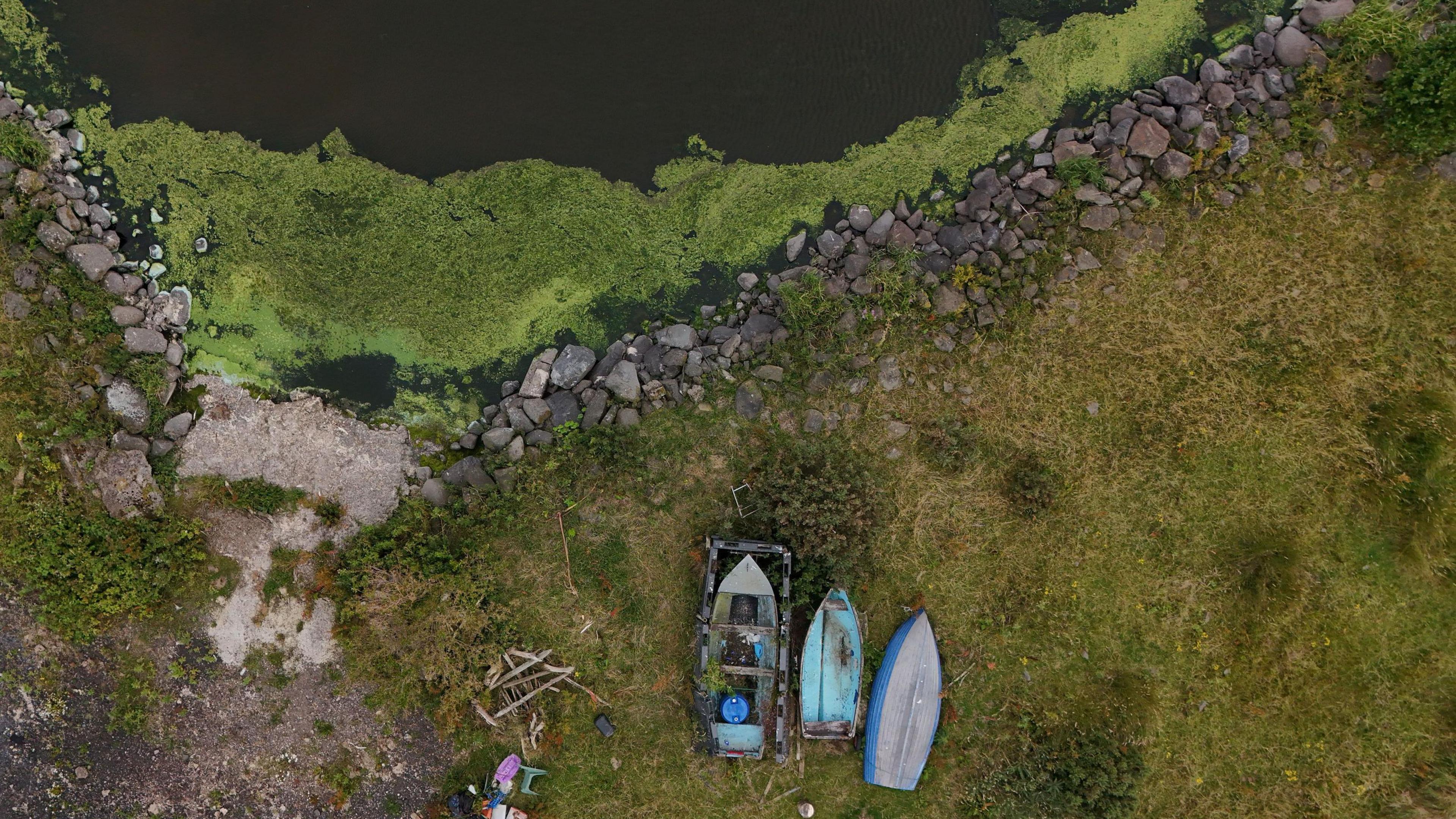
The shores of Lough Neagh in County Antrim, pictured in July
Blue-green algae, technically known as cyanobacteria, is a collection of microscopic organisms that are naturally present in lakes and streams.
Under certain conditions, blue-green algae can become abundant in warm, shallow, undisturbed, nutrient-rich surface waters that receive a lot of sunlight.
When this occurs, blue-green algae can form blooms that discolour the water, or produce floating mats or scums on the water’s surface.
Exposure to high levels of any blue-green algae blooms - whether by contact with water blooms, swallowing that water or inhaling airborne droplets - can cause health effects in people and animals.
Last year a number of dog deaths were reported after the animals swam in affected waters.
You can learn more about blue-green algae by reading our explainer here.
Related topics
- Published2 August 2024
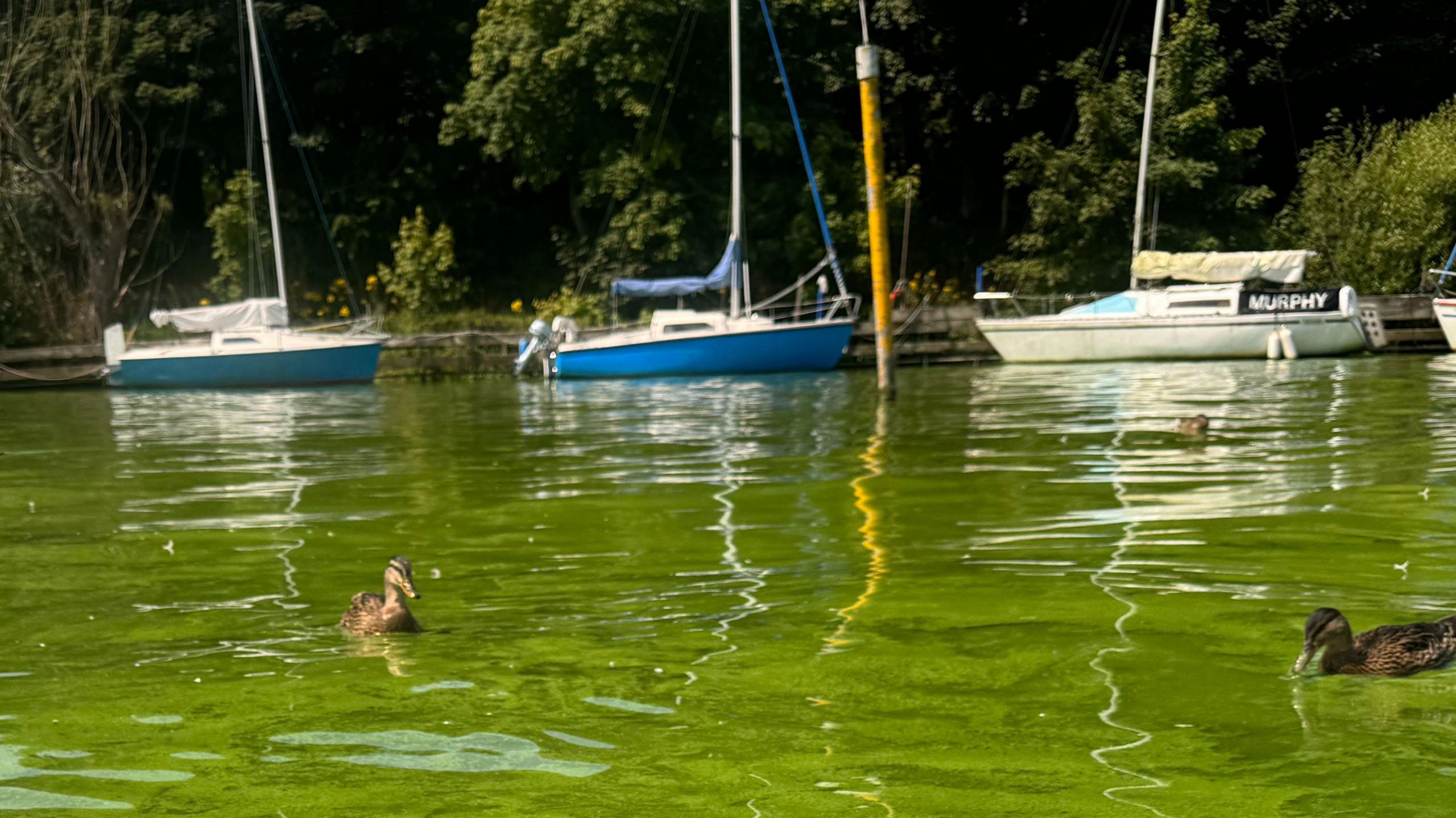
- Published3 October 2023
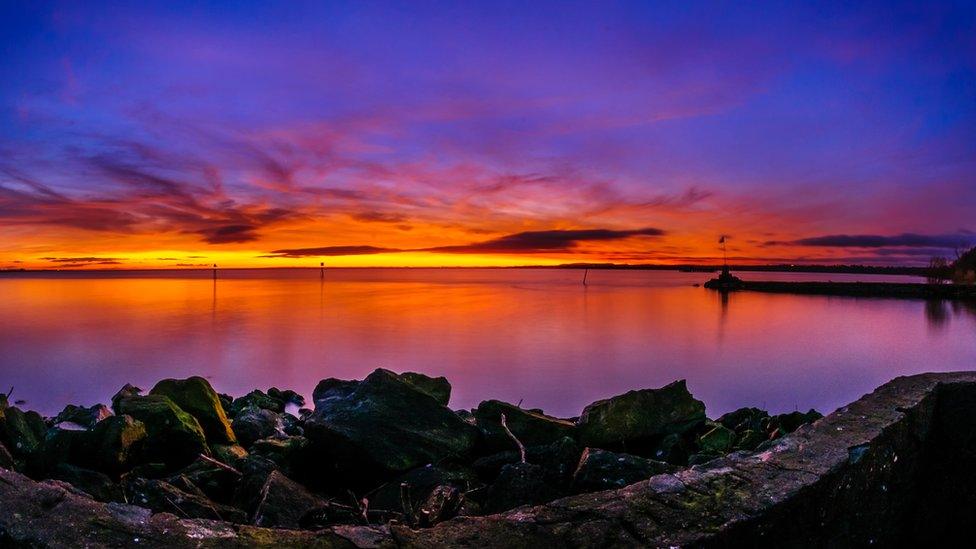
- Published18 July 2024
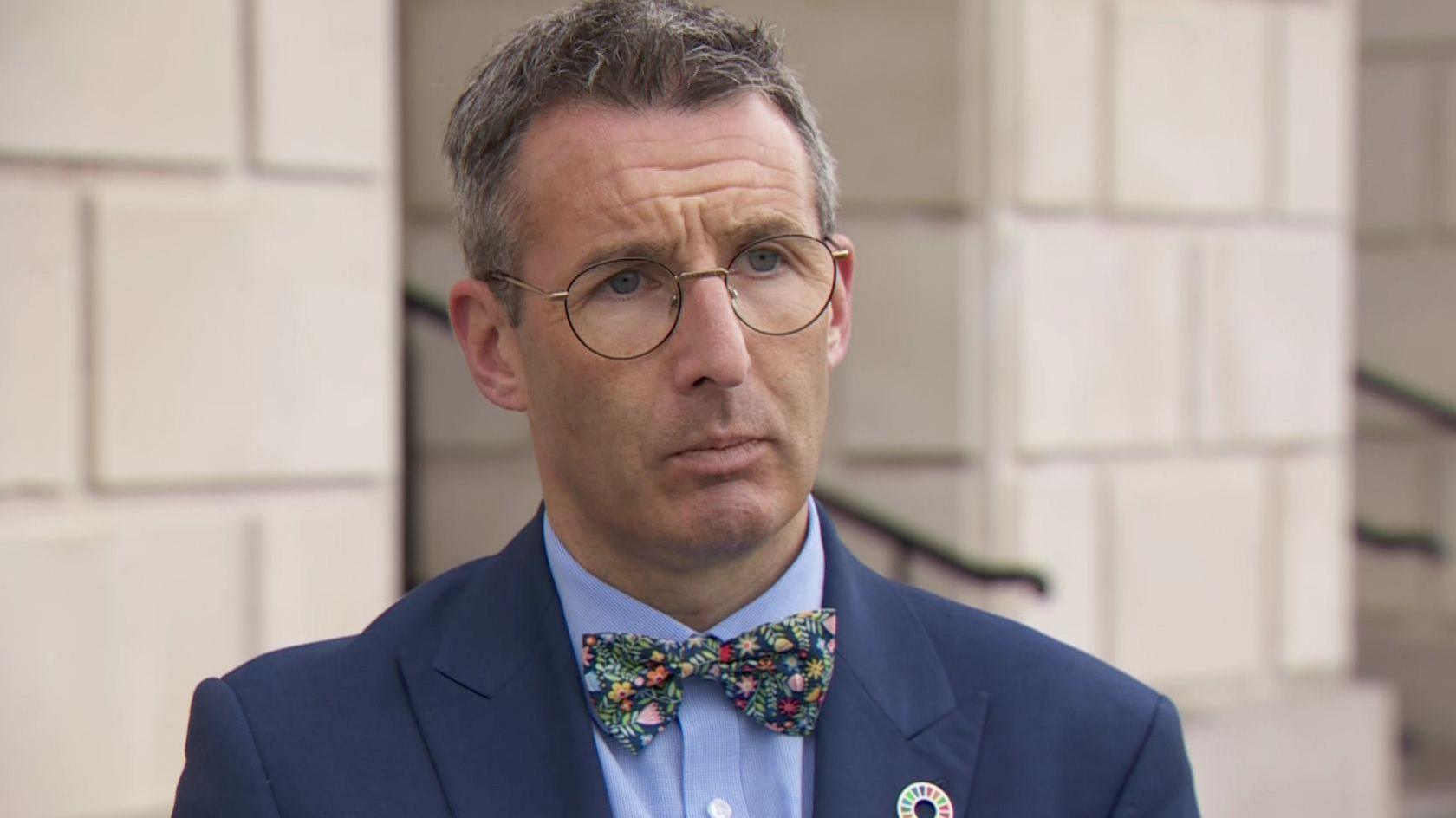
- Published5 August 2024
